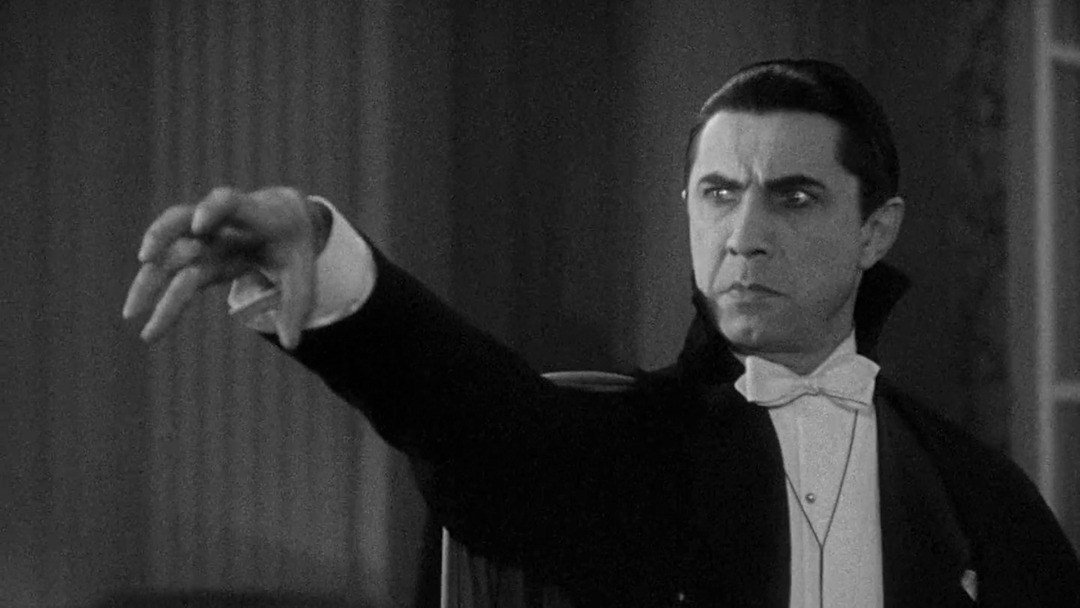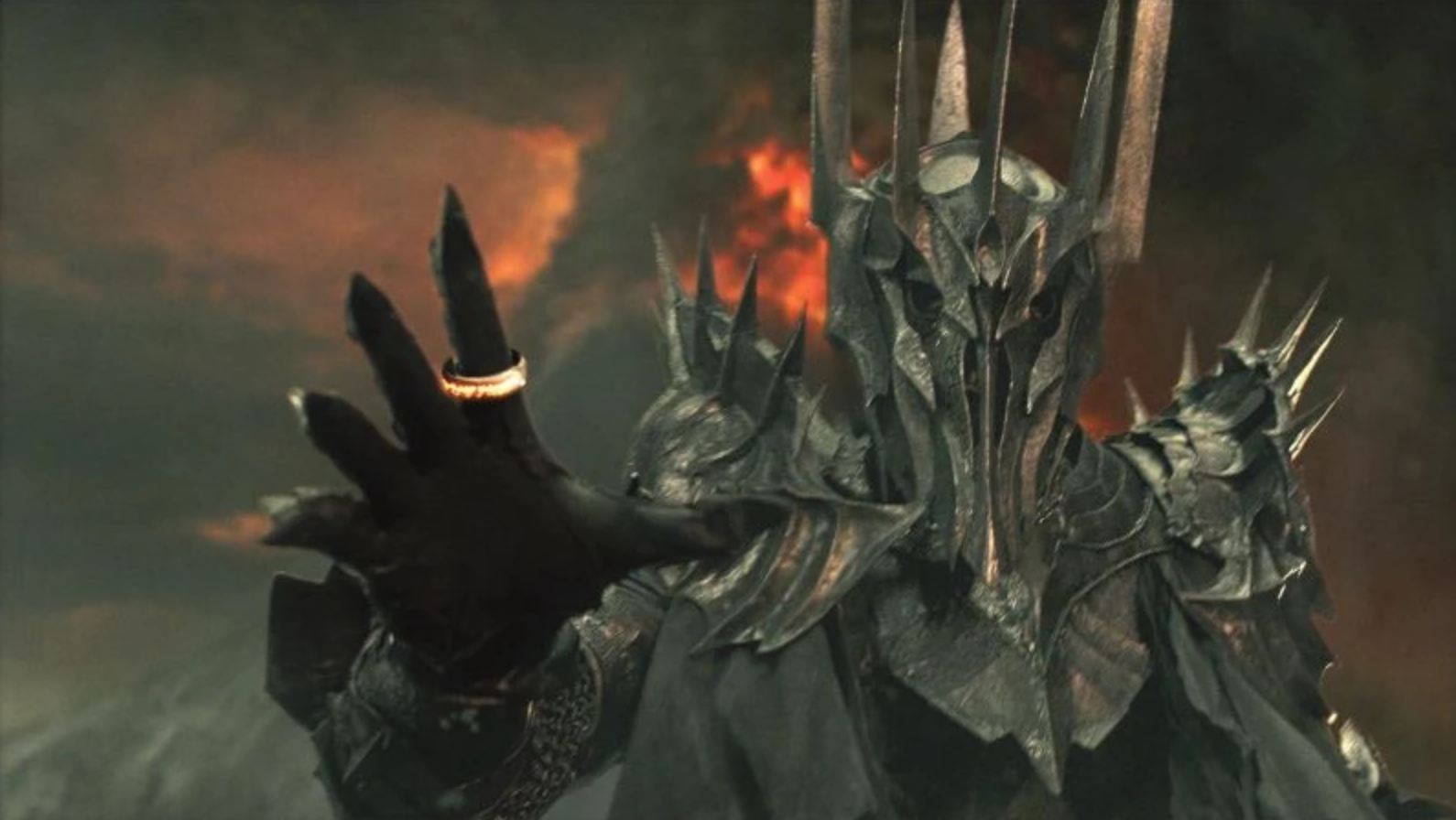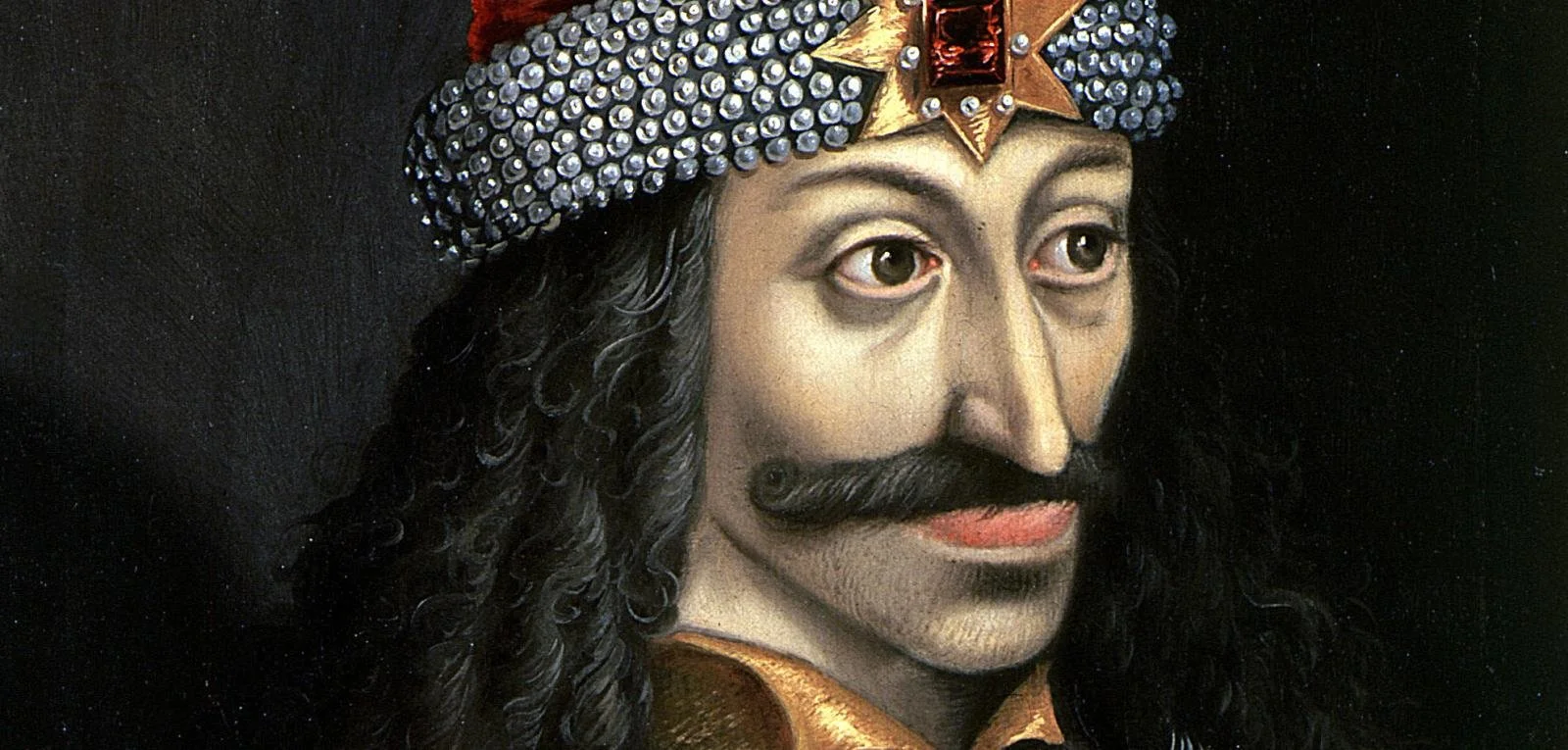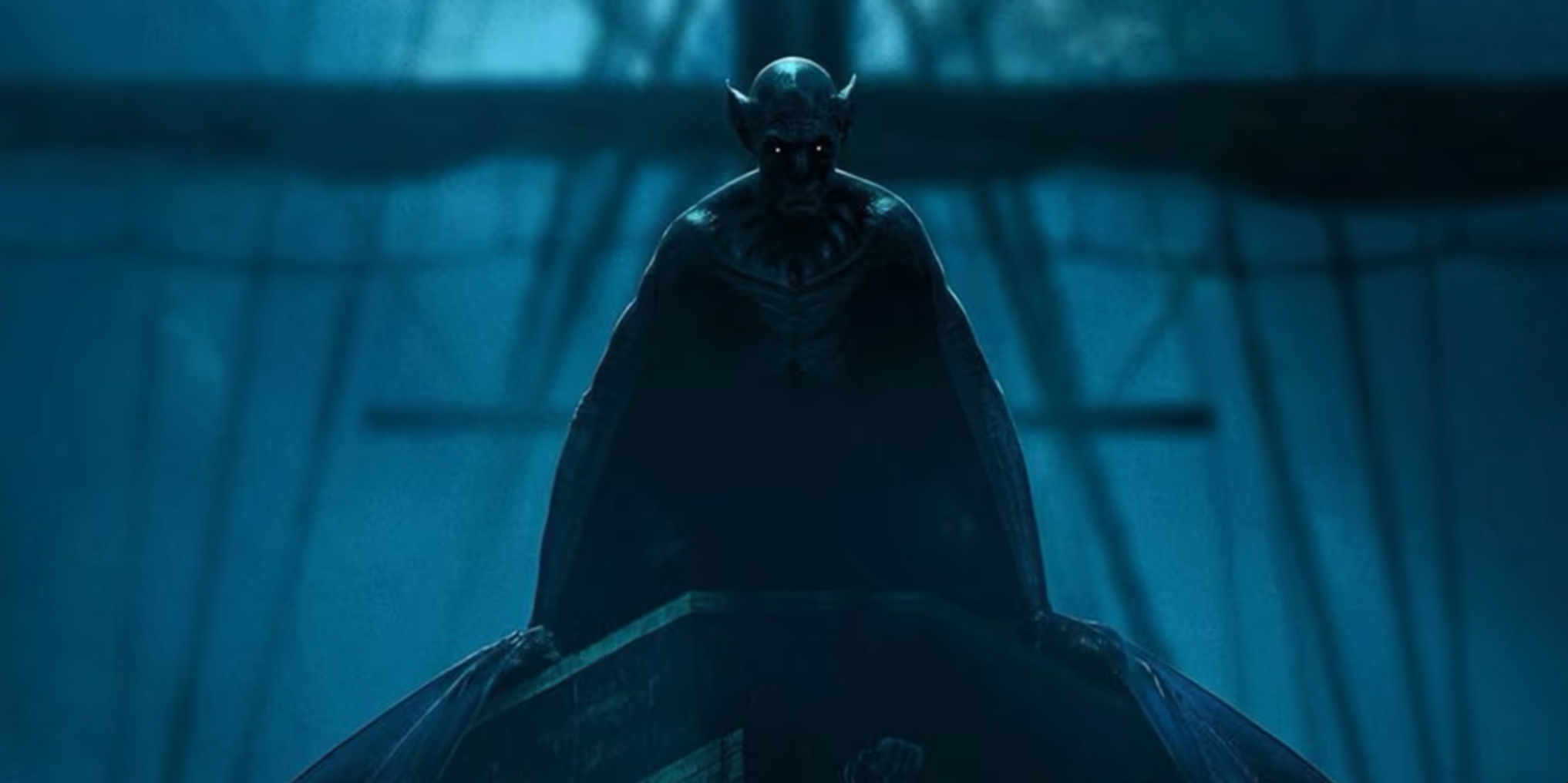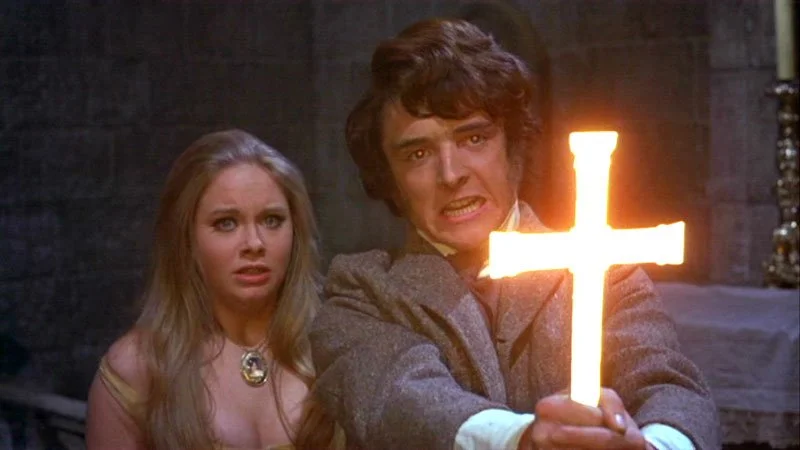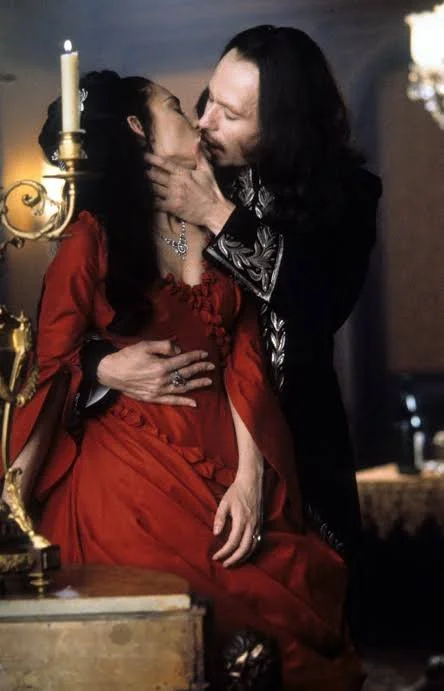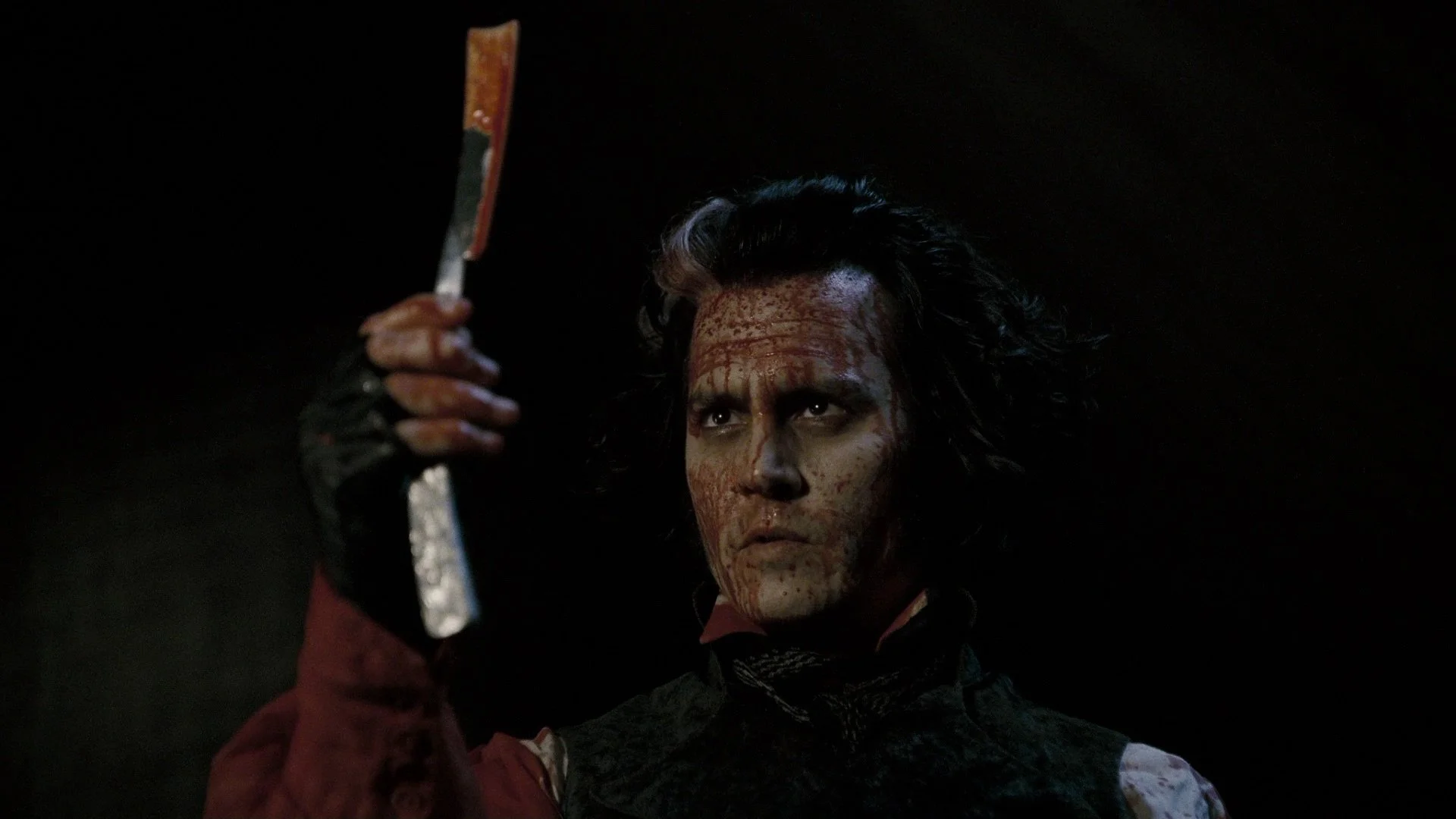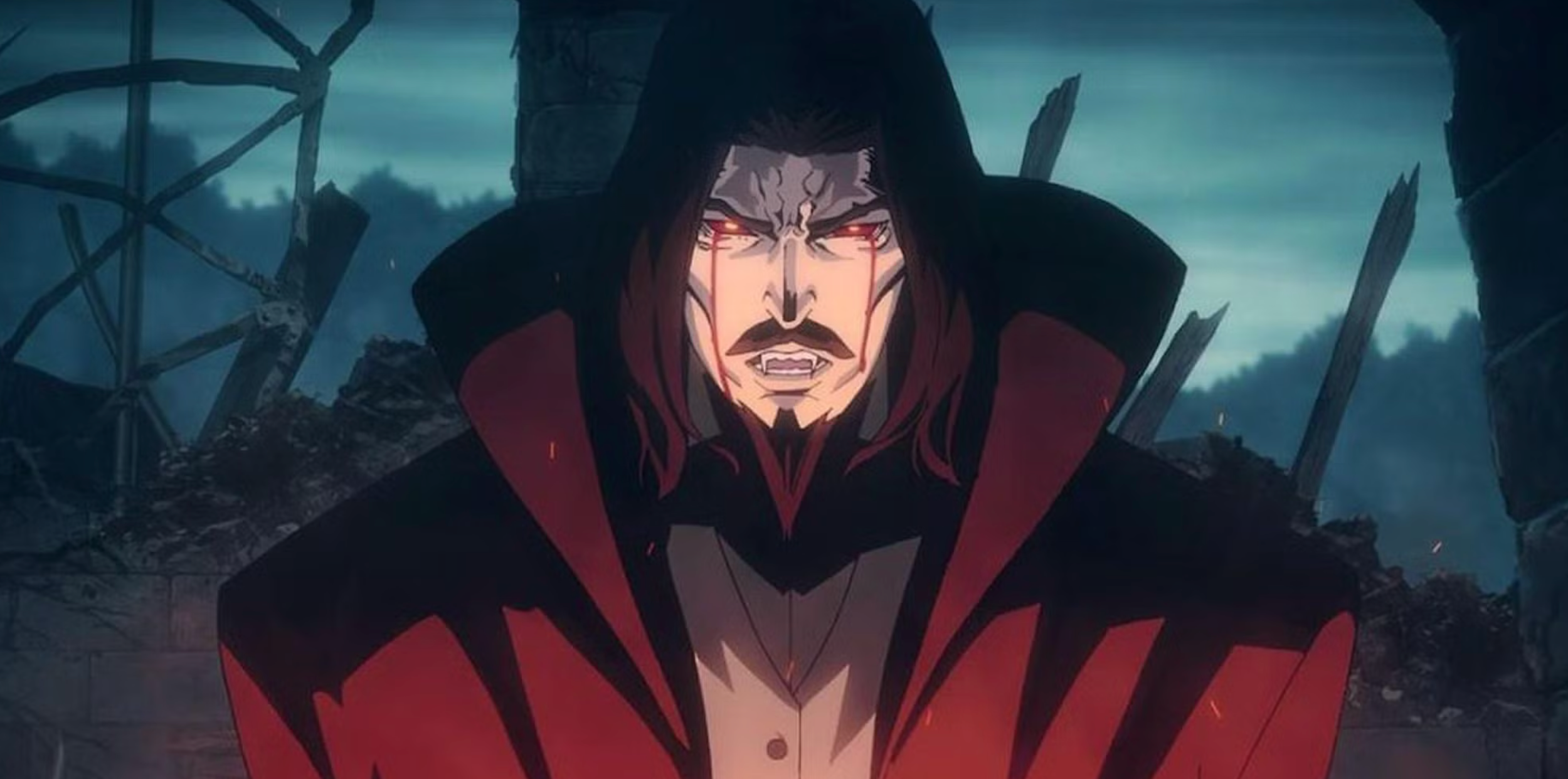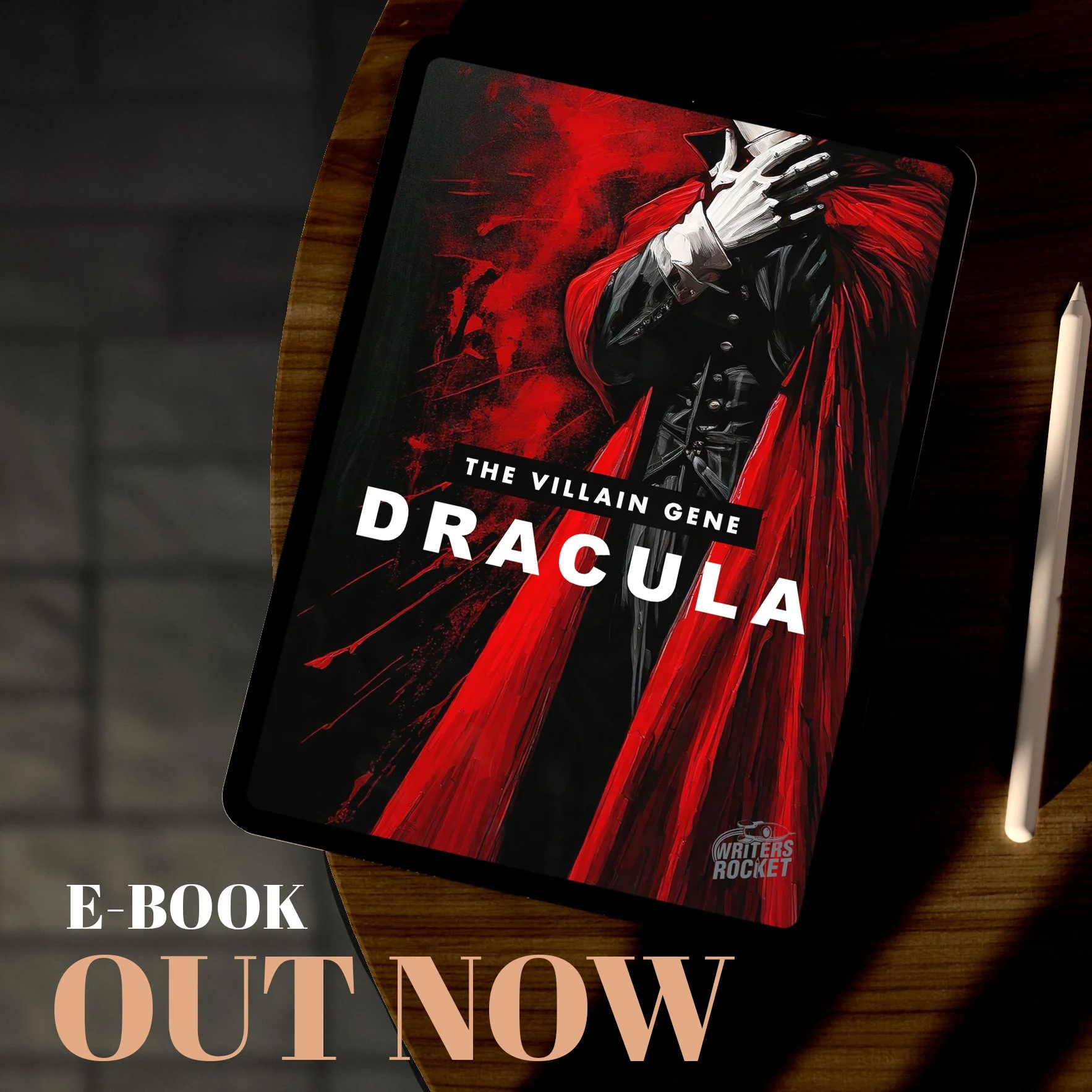DRACULA
THE VILLAIN GENE
Dracula is one of the most versatile villains in modern pop culture. But was he originally designed to be the ultimate villain, or is he a product of his time?
Reading Time estimated: 10 minutesEPILOGUE
DRACULA - A VERSATILE VILLAIN
“Listen to them. The children of the night. What music they make.”
Dracula (1931) portrayed by Bela Lugosi
Imagine: you’re sitting in a movie theater, it’s February 14, 1931. A few years ago, the sound-on-film technology replaced sound-on-disc, revolutionizing cinema once again. By the way, smoking in theaters was still allowed back then. A figure flickers on the screen, cloaked in darkness, fangs glinting as he emerges from the shadows. Yeah okay, that is a little overdramatic. But then you hear him say, with a distinctly rolling R in his voice:
"I AM DRACULA"
Dracula was added to the National Film Registry in the Library of Congress, USA, in 2000 as ‘culturally, historically or aesthetically significant’. But even before his on-screen appearance portrayed by Bela Lugosi, Dracula inspired an entire generation and the maybe equally famous Count Orlok in the movie Nosferatu (1922) wich is indeed a loose adaption on Bram Stoker’s 1897 novel ‚Dracula´.
The first Nosferatu movie hit the screen in 1922 - a few years before Dracula, directed by Friedrich Wilhelm Murnau and written, or rather adapted, by Henrik Galeen. The film even lost a copyright lawsuit in 1925 because it was too close to the source material. Therefore it was supposed to be destroyed but fortunately, it survived.
But the name Nosferatu doesn’t come for no reason. In Chapter 18 of Stoker‘s novel, Professor Van Helsing even refers to Dracula or vampires in general as ‚The Nosferatu’, which translates to ‘The Undead,’ and elaborates:
"The Nosferatu do not die like the bee when it stings once. He is only stronger, and being stronger, have yet more power to work evil."
A century later, Robert Eggers, the creator of The VVitch (2015), The Lighthouse (2019), and The Northman (2022), revisits the material, offering us the next reinterpretation of the hunchbacked bloodsucker. Ohh and it is a good one. At least in my opinion.
These two appearances in new media back then have granted Dracula entry into our society. And that was just the beginning. He has proven to be one of the most versatile characters of all time.
But let’s come back to the initial question…
1. What makes Dracula a strong villain?
Villains or antagonistic powers push the hero to their limits, forcing them to grow. This confrontation is often where the hero discovers their true strength and character. Some villains are simply designed to be evil, however they still work pretty well. Often because they embody a certain force rooted in the story’s central theme creating conflict.
In The Lord of the Rings Trilogy (first published in 1954), Sauron represents absolute power, domination and the desire for control over all the free races of Middle-earth. Sauron’s goal is to rule over everyone and to distinguish all individual freedom and diversity through the power of the ring.
Sauron’s power is banished by Frodo’s self-sacrifice, the strength of the fellowship and the refusal to pursue power. And of course the courage of small, unassuming beings, such as a hobbit.
Or take even the Terminator (first 1984) movies for example. The Terminators are programmed to be the ultimate killing machine, it‘s strings pulled by Skynet wich is also just a out of control program. And sometimes that’s all it takes to create a villain or rather a strong antagonistic force. Because there’s still a solution: Sauron stands for suppression, that’s why the fellowship is born. Autocracy vs. Community.
But how about Dracula?
1.1 EMBODYMENT OF LUST
In Stoker’s novel, Dracula represents irresistible sexual lust. Written in Victorian England, the novel reflects the era’s strict views on sex and relationship. Where sex outside of marriage were seen as sinful. Dracula seduces female characters like Lucy and Mina to endanger their physical purity and also their moral values.
The use of words describing vampires in Stoker’s novel often come with a sexual undertone. In chapter fourteen, Jonathan Harker’s encounter with the three female vampires, the weird sisters, emphasizes the physicality of the attack.
» In contrast to Dracula, who is elegantly dressed and eloquent, the Nosferatu walks dressed in rags, is bald, hunchbacked, ugly and can barely speak. It is also notable that his ‘biting teeth’ are not enlarged canines, but sharpened incisors at the top and bottom (rodent-like). Accordingly, his symbolic animal is not the wolf, but the rat, which is linked to his characteristic as the bringer of the plague.’
Here we can take a closer look at which words are used by Stoker to create this kind of weaponized sexuality:
„There was a deliberate voluptuousness which was both thrilling and repulsive, and as she arched her neck, she actually licked her lips like an animal. . . . Lower and lower went her head as the lips went below the range of my mouth and chin and seemed about to fasten on my throat. . . . I closed my eyes in a languorous ecstasy and waited – waited with beating heart.“
Jonathan Harker, Van Helsing and Dr. Seward use a mix of traditional religious tools representing the pureness and moral values like crucifixes, sacred soil and prayers to defeat Dracula and his seductive, dark influences.
1.2 BRUTAL NATURE
Interestingly, for the more ruthless and brutal characteristics Stoker took inspiration from historical figures like Vlad Tepes, also known as Vlad the Impaler, who was infamous for, well, impaling his enemies. He was given the alias Drăculea, which is a fascinating idea. It suggests that Vlad II was called Dragul and that this name, in connection with the Dragon Order insignia, was interpreted folk etymologically as ‘the dragon’ and subsequently as ‘the devil’.
And just like in the movie The Last Voyage of Demeter (2023), wich focuses on the specific chapter of the source novel The Captain’s Log, we see Dracula as a monstrous, bloodthirsty creature. More like an animal, lurking in the shadows for his prey.
The crew of the merchant ship Demeter set sail from the Black Sea for London to deliver a cargo of 50 unmarked wooden crates. In this scenario the crew of the Demeter soon realize that they are not alone: Dracula’s unholy presence turns the voyage into a nightmarish struggle for survival.
» The Death Sleep
The novel portrays the state of rest that vampires experience during the day as a deathlike trance. In this state, the vampire lies motionless, often with open eyes, entirely unable to awaken or move. This condition renders them oblivious to their surroundings, including the presence of intruders or potential threats. This vulnerability underscores their dependence on the safety of their resting place, heightening the sense of peril should their sanctuary be discovered.
The idea is simply that the undead must reconnect with the earth, which serves as a source of their supernatural vitality and sustenance. This is why Dracula carried many boxes of soil on the ship to england.
1.3 WEAKNESSES
Even if Dracula is designet to be the ultimate force of nature he has of course some flaws and weaknesses:
Remember the elusive antagonistic force of Sauron mentioned earlier and how to solve this problem of suppression? Well Dracula stands for sin, darkness and lust. What better contrast could there be than salvation through religion, the light of day and love?
In addition you can kill or at least weaken Dracula with a wooden stake through the heart, silver, religious symbols, sunlight and during the death sleep.
» Often attributed flaws:
Silver burns the skin.
Cross a river only on changing tides.
No mirror reflection.
Death sleep
He cannot enter a home unless invited.
He is weakened by sunlight, though in Stoker’s novel, sunlight does not destroy him only limits his powers.
He is repelled by garlic, crucifixes, and sacred objects.
Wooden stakes through the heart, decapitation, or fire can kill him.
Freeze or burn facing a crucifix.
In Bram Stoker’s original novel, Dracula could go outside in sunlight without issue. The legend that vampires die in sunlight, as we know it today, may originate from a misunderstanding of the movie Nosferatu. In it, the ritual to destroy a vampire is that they must feed on a pure woman until the first cockcrow, which is generally when the sun rises.
But there is another dent in his armor that initially looks like a strength: Immortality through blood. Dracula is commonly depicted with a bloodlust which he is seemingly unable to control. Immortality and loss of control, a dangerous mixture.
Immortality in particular often comes at a high cost: Loneliness.
1.4 POWERS
However Stoker designed the King of Vampires to be the ultimate evil force of nature, hiding behind a charming appearance. Which is impressive because of the fact that he has no mirror image.
His strengths and powers have remained consistent yet adaptable, solidifying his status as a fearsome villain and a complex figure. In the novel, Dracula possesses superhuman strength, shapeshifting abilities, immortality, mind control, and the power to summon creatures like wolves and bats or turn into one. These traits make him a formidable foe, embodying both physical and psychological terror.
Dracula is a vessel for all those hidden human wishes, like eternal life, power, and yes, even repressed sexuality. He’s not just a villain, he’s everything we secretly crave but know we shouldn’t.
A retrospective metaphor.
» Often attributed powers:
Immortality: Dracula does not age and is essentially immune to natural death or disease.
Superhuman Strength: He possesses strength far greater than that of a mortal man, capable of overpowering his enemies with ease.
Shapeshifting: Dracula can transform into various forms, including:
Bat: For flight and mobility.
Wolf: Highlighting his connection to the wild.
Mist: Allowing him to slip through cracks or crevices undetected.
Hypnosis/Mind Control: Dracula can exert a hypnotic influence over others, bending their will to his desires, particularly vulnerable individuals like Mina and Renfield.
Control of Creatures: He commands nocturnal animals such as bats, rats, and wolves, summoning them to do his bidding.
Enhanced Speed and Agility: He moves with unnatural speed and grace, often appearing or disappearing in the blink of an eye.
Regeneration: Wounds that would kill a mortal can heal rapidly in Dracula, especially if he consumes fresh blood.
Climbing: He can scale walls vertically, like a lizard, which adds to his supernatural mystique.
2. TRANSFORMATION
So how does Dracula evolve over the time and in our pop culture since his novel debut?
Some of our most beloved villains are complex multi-layered characters. Look at Darth Vader or even Homelander from The Boys (TV series since 2019) – they’re not just evil for the sake of it. They have motivations, often rooted in pain or loss, which makes them relatable. We understand them, even if we don’t agree with them.
Anakin Skywalker has understandable goals, but increasingly feels betrayed until the Dark Side seems to hold him in higher esteem than his closest allies and even his great love, Padmé. This ultimately leads to his dark transformation.
When you dig deeper into Dracula’s psyche, you’ll see a cursed, isolated creature, unable to connect with anyone in a human way. Outcast as something monstrous and inhuman, he longs to find his own kind, or at least to preserve it, perhaps even to spread it. Maybe he’s more of a tragic figure, doomed by his own immortality. Over time, Dracula becomes more layered.
In Francis Ford Coppola’s Dracula (1992), writer James Hart add a tragic backstory, close to Stoker’s source material. Suddenly, Dracula isn’t just a villain, he’s a man who lost his true love and was cursed for eternity. When Dracula went off to fight in the Order of the Dragon, his wife Elisabeta heard false reports of his death and committed suicide.
This led to Dracula rejecting God and using dark powers to rise again as a vampire. Just like in the original, the young lawyer Jonathan Harker is sent to Dracula’s castle to finalize a real estate contract. But when the Count sees a photo of Harker’s fiancée Mina, who is the spitting image of his deceased wife, he imprisons him and sets off for London to track her down. Elizabeta was created only for the 1992 movie. There is no mention of Dracula having a lost love in the novel.
In the TV series Penny Dreadfull (2014-2016) Dr. Sweet as he first introduced himself to Vanessa Ives, is the dark lord vampire who seduces Vanessa in season three. He’s the brother of Lucifer (and a fallen angel himself), banished to Earth when Lucifer was banished to Hell. Like his brother, he wants to make Vanessa his bride and queen, but Dracula isn’t after global destruction. He’s after world domination. Later Dracula convinces her that, even though she was only a means to an end at first, he eventually fell deeply in love with her. A tragic figure shaped by suffering and isolation, seeking for companionship.
Then there’s Hotel Transylvania (2012), where Dracula is portrayed as an overprotective father, torn between his role as a monster and his love for his daughter. He just trying to protect his daughter Mavis from the „monsters“ of the evil human world. But this circumstance allows us to understand and sympathize with his motives. We want Dracula to be the successful dad in a way. But he remains an antagonist to his daughter Mable, as he tries to prevent her from strengthening the bond between her and a human boy. This makes him relatable, but still an antagonistic force. Depending on the…
2.1 PERSPECTIVE
Bram Stoker describes his character as an educated and distinguished gentleman who cleverly hides his devilish side behind an attractive appearance.
Some of Draculas traits are familiar from other tragic figures in films, games, and musicals. The reason I mention musicals here is because I’m alluding to a very specific character: Sweeney Todd, the demon barber of Fleet Street, portrayed by Johnny Depp in 2007 and wonderful bizarrely directed by Tim Burton. The underlying plot of the musical and its later adaptations also bears parallels to the modern interpretation of Dracula. Sweeney Todd, like Dracula, is driven by a mix of revenge, which is preceded by a deep love. Todd is exiled due to a conspiracy and returns 15 years later, believing his wife to be dead, and finding his daughter now in the care of his arch-enemy, the very man who had banished him. Fueled by revenge, he slashes through all those who robbed him of his family.
Kind of similar to Netflix’s Castlevania series and the game series as well, you’ll see Dracula portrayed as a figure consumed by pain and revenge, almost deserving of our sympathy. He loses his beloved wife Lisa to the church’s mistaken belief that people should be burned at the stake or ‘cleansed’ in the righteous name of God. When he returns after a long journey, he finds only ruins, her wife’s house burnt to the ground. As a result, he curses the people, and his desire to obliterate humans from the face of the earth grows stronger with each season. His driving force: revenge. And both seal it with gallons of blood, mostly from the carotid artery.
The only difference is that we see Sweeney Todd as a protagonist, more of an antihero, while Dracula is seen as the villain. Why? Because of the perspective.
» Castlevania
In Japan known as Akumajō Dracula, is a gothic horror action-adventure video game series and media franchise developed by Konami. The storyline primarily takes place within the castle of Count Dracula, the sworn nemesis of the Belmont family, a lineage of skilled vampire hunters.
Warren Ellis adapted the video game into a TV series for Netflix which focuses on vampire hunter Trevor Belmont who, together with Dracula’s son Alucard and the magician and narrator Sypha Belnades, hunts Dracula.
We do indeed also see Dracula as a hero. In Dracula Untold (2014), we get a engaging origin story: Vlad as a nobleman who sacrifices himself to protect his people. This time, we immerse ourselves in his unique perspective – as a hero, not just a villain. His character radiates immense strength and responsibility toward both his wife and his people, whom he seeks to protect from the deadly violence of the impending war. His perspective opens up his thoughts and motivations, making him relatable. As an audience, we can more easily identify with or at least understand his actions, even when he moves into morally gray areas.
But here is the kicker:
Because Stoker decides against an omniscient narrator, we only get to know Dracula through the diaries of the other characters who meet him and write about the horrors he unleashes. This gradual unveiling of the plot through multiple perspectives heightens the suspense because of the mystery.
The original book and many of the films or games mentioned earlier, are especially fascinating given that the book is told from several perspectives, none of which are Dracula’s own. And as the great Anatole France once said:
“We never heard the devil’s side of the story because God wrote all the book.”
CONCLUSION
So, to wrap it all up here’s what we can learn from Dracula when it comes to storytelling and fleshing out a strong counterpart for our protagonist:
From his literary origins through numerous film adaptations to his role in modern series and video games, the Prince of Darkness has proven to be a versatile symbol of fear, seduction, and power.
He has been everything from a ruthless, bloodthirsty monster to a deeply relatable, tragic figure. Often he comes with a fresh twist. Whether he’s scaring or making us feel for his loneliness, he’s a character that sticks with us.
Is he the perfect villain? Maybe. Is he misunderstood? Definitely. In the end, Dracula works so well because he embodies both. He’s terrifying because he reminds us of our darkest fears, but also because we can see a bit of ourselves in him—the desires, the isolation, the endless search for connection.
Is he a misunderstood character, trapped in his own nature? Well, a villain is more compelling when they’re not just evil for evil’s sake. The best villains are those who make us think, who make us wonder: What if they’re not so different from us after all? What if they’re right?
And Dracula grew more and more over the decades. He is the perfect template for a profound villain. Building on his familiar traits, we have succeeded over countless adaptations in giving him more depth, reinterpreting him and shaping his original nature with new twists. This approach of moulding a character more and more and constantly adapting him to todays audience and context of society ultimately made him immortal as he’s always been.
